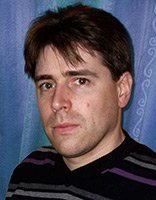
Portrait Prof. Dr. Philippe Poizot
Image: Prof. Dr. Philippe PoizotCurriculum Vitae
Philippe Poizot is currently Professor of Chemistry at the University of Nantes (Institut des Matériaux Jean Rouxel, IMN-CNRS, Nantes, France), and has been working on electrochemical systems for the past 20 years. After a Master of Science in Analytical Chemistry (University of Paris VI, 1998), he obtained his Ph.D. degree in Materials Science (2001) at the University of Picardy Jules Verne (LRCS, Amiens, France). During his PhD, he showed that numerous simple 3-d metal oxides and others chalcogenides can electrochemically and reversibly react with large amounts of Li through what it is called now a “conversion reaction”. He joined Switzer’s group (University of Missouri-Rolla, USA) in 2001 as postdoctoral fellow to develop the electrodeposition of nanostructured materials and enantiospecific catalysts. He became Associate Professor in Chemistry in 2002 at the University of Picardy Jules Verne (LRCS, Amiens, France) and worked with Prof. J.-M. Tarascon. In 2007, he proposed the concept of “renewable” batteries by promoting novel electrode materials based on redox-active organic compounds deriving from biomass and obtained his habilitation in 2010. Then he joined the University of Nantes (Institut des Matériaux Jean Rouxel, IMN-CNRS, Nantes, France) in 2012. His current research topics are mainly focused on rechargeable batteries, molecular electrochemistry and the development of organic batteries in both aqueous and non-aqueous electrolytes. He is a recipient of the Bronze Medal of the French Society for Encouragement and Progress (2002), was Fellow of the Institut Universitaire de France (2012-2017). He is author of more than 80 publications and co-inventor of near 10 patents.
Learn more about Prof. Dr. Philippe PoizotExternal link
Abstract
Progress in all-organic rechargeable batteries using THE anionic CELL configuration
Poizot1,2, A. Jouhara1, N. Dupré1, D. Guyomard1, M. Armand2, F. Dolhem3
1 Institut des Matériaux Jean Rouxel (IMN), UMR CNRS 6502, Université de Nantes, 2 rue de la Houssinière, B.P. 32229, 44322 Nantes Cedex 3, France
2 CIC EnergiGUNE, Alava Technology Park, Albert Einstein 48, 01510, Miñano, Alava, Spain
3 Laboratoire de Glycochimie, des Antimicrobiens et des Agroressources (LG2A), UMR CNRS 7378, Université de Picardie Jules Verne, 33 rue Saint-Leu, 80039 Amiens Cedex, France
E-mail: philippe.poizot@cnrs-imn.fr
After years of silence, redox-active organic compounds are re-emerging in the energy storage community bringing with them interesting opportunities such as design flexibility, lightweight, low cost and/or restrained environmental burden [1,2]. In addition, they can potentially integrate a wide variety of electrochemical device architectures operating both in aqueous or non-aqueous electrolytes. In 10 years, tremendous progress has been made to promote organic compounds in various rechargeable storage devices [3-6] including the redox flow cell configuration [7]. Some of them exhibit attractive electrochemical behaviors such as long-term cycling stability and high-rate capability. Finally, they offer different electrochemical activities including the common reversible cation uptake/release as well as access to anion-inserting process bringing to us another playground in designing organic electrochemical storage systems including the development, in principle, of molecular ion batteries [8-10].
This contribution aims at reporting recent electrochemical data obtained with crystallized p-type organic materials making the formation of all-organic ClO4-ion batteries possible. In particular, novel double-zwitterionic redox-active structures will be presented (including their synthesis routes and the corresponding characterization measurements) for possible application as negative electrode materials.
References:
- P. Poizot and F. Dolhem, Energy Environ. Sci., 2011, 4, 2003–2019.
- M. Armand and J.-M. Tarascon, Nature, 2008, 451, 652–657.
- [Y. Liang et al., Adv. Energy Mater., 2012, 2, 742–769.
- T. Janoschka et al., Adv. Mater., 2012, 24, 6397–6409.
- Q. Zhao et al., Ind. Eng. Chem. Res. 2016, 55, 5795−5804; Adv. Energy Mater. 2017, 7, 1601792.
- C. Friebe, Top Curr. Chem. (Z) 2017, 375:19.
- J. Winsberg et al., Angew. Chem. Int. Ed. 2017, 56, 686–711.
- E. Deunf et al., J. Mater. Chem. A, 2016, 4, 6131–6139; Electrochem. Commun., 2016, 72, 64–68; CrystEngComm, 2016, 18, 6076–6082.
- M. Yao et al., Sci. Rep. 2015, 5, 10962.
- P. Poizot et al., Curr. Op. Electrochem. 2018, 9, 70–80.
